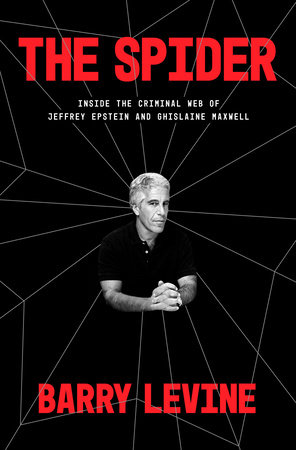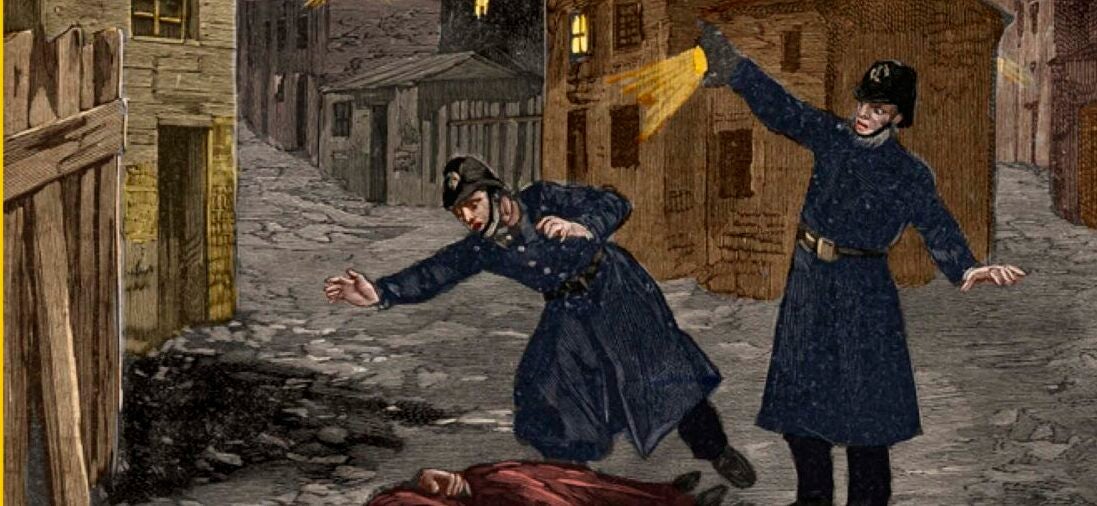Sixteen hundred twenty-seven miles of ocean separate Coney Island's gaudy boardwalk at the southern tip of Brooklyn—where Jeffrey Epstein grew up—from the white sand beaches of the U.S. Virgin Islands, where he later made his home.
There, amid the few dozen islands and cays off the southeast tip of St. Thomas, sits a seventy-acre cay called Little St. James. Epstein acquired the island in 1998 for $7.95 million and purchased the adjacent one, Great St. James, for $17.5 million almost two decades later. Estimates now peg the islands' combined value at about $86 million.
The onetime schoolteacher turned financier called his private getaway Little St. Jeff's. During his visits—two or three times a month, usually—he lived in a cream-colored villa with a bright turquoise roof. The estate also featured a movie theater, library, and detached Japanese bathhouse. Meditative music was piped in around the property, its two pools, and the cabanas.
Five other structures dotted the island, including staff quarters; at one point, around 2008, the staff had ballooned to some seventy people. There was an outdoor massage room, as well as a mysterious building that resembled a temple. Farther from the villa sat a helicopter pad and, beyond it, a secluded cove Epstein called "the grotto." Two massive U.S. flags flew on either end of the island, where security guards patrolled the water's edge.
When Epstein was on his island, the polo-shirt-clad employees were to stay out of sight. There were reportedly other rules as well. The temperature in his bedroom was kept at a chilly 54 degrees. Towels had to be replenished constantly. Mats had to be readied for his frequent yoga practices. Vegetarian food—the teetotaling Epstein's favorite—was always on hand.
The house contained several oddities. Epstein kept his collection of "pirate treasure" not in jewelry boxes but in "old rum bottles and crockery" discovered on the island by workers, according to one report. Other items were less benign. A contractor who worked in the house told a journalist that Epstein had installed a "ten-showerhead shower—for group showers," adding that he observed framed pictures of "young, barely clothed or semi-nude girls."
Many characteristics about the island stuck out in the minds of visitors, but what left the biggest impression on locals were Epstein's guests.
On Little St. James, Epstein entertained a variety of boldfaced names. Most famous was Bill Clinton, who was a passenger on Epstein's jet at least twenty-six times. Two witnesses placed Clinton on the island in 2002, although his spokesperson has denied he ever visited.
Other visitors included captains of industry, celebrities, and royalty. Prince Andrew visited, and so did his ex-wife, Sarah Ferguson, as well as Epstein's patron, businessman Les Wexner, and the lawyer Alan Dershowitz. In March 2006, Epstein hosted the Cambridge professor and theoretical physicist Stephen Hawking and twenty other renowned scientists for a conference called "confronting gravity" in St. Thomas. Science was a passion for Epstein, an interest that manifested in sometimes bizarre ideas, as well as in financial gifts and ties to institutions that would later disavow them.
Nearly everyone who fell into Epstein's web later came to regret it.
While plenty of VIP guests visited Little St. James in the years Epstein resided there, another type of visitor stands out in the minds of many locals.
Epstein would shuttle his visitors to the island by helicopter or boat from St. Thomas, about a mile away. According to a lawsuit filed by the attorney general of the Virgin Islands against Epstein's estate in early 2020, local "air traffic controllers and other airport personnel" reported seeing Epstein accompanied by girls who appeared as young as eleven and twelve years old, and as recently as 2018. According to the suit, Epstein flew his victims into Cyril E. King Airport in St. Thomas on either one of his two Gulfstream jets or his Boeing 727-200, which later became known in the media as the Lolita Express.
The court papers detail a "pattern and practice of human trafficking, sexual abuse, and forced labor of young women" on the island. While Epstein liked to brag about his "Zen-like retreat," for others it was a place of horror. One fifteen-year-old victim was so desperate to escape the island that she tried to swim to freedom. Prince Andrew was once seen groping an underage girl on a balcony on the island that was "right out in the open."
One victim who was raped by Epstein on his island said, "I spent two weeks vomiting almost to death in a hospital after that first encounter." Still another victim told CBS News that Epstein "trapped me in his bedroom on the island where he had a gun strapped to his bedpost. I couldn't leave."
A former air traffic controller told Vanity Fair that on multiple occasions he saw "Epstein exit his helicopter, stand on the tarmac in full view of my tower, and board his private jet with children—female children." Another employee at the airstrip observed that Epstein's companions "were always wearing college sweatshirts" that seemed intended as "camouflage."
When I traveled to St. Thomas in January 2020, a cabdriver told me locals referred to Epstein's island as Dicks Island, while others, she said, called it Obeah, meaning "a bad omen." A place of evil.
In the Virgin Islands, Epstein spun his web from a "business" office he maintained on St. Thomas. Known officially as Southern Trust Company, Inc., the office was tucked away in the American Yacht Harbor complex in the Red Hook quarter on the far eastern side of St. Thomas.
On the morning I visited, the office's glass doors were closed and covered with heavy hurricane shutters painted blue. To the right of the entrance were neglected potted palms and tropical plants. In the marina below, I could see yachts, catamarans, and sailboats. (Epstein reportedly co-owned the 127-slip marina with real estate tycoon Andrew Farkas, a past business partner of Jared Kushner.) Across a road was a small shopping center with a place called Duffy's Love Shack in front.
Epstein, who sexually abused at least one young victim in the office, passed off Southern Trust as a company researching genetic sequencing databases for cancer treatment and DNA sequencing. What the 3,200-square-foot office also housed, according to Virgin Islands attorney general Denise George, were databases to track the movements and availability of young women and underage girls.
The dark side of Jeffrey Epstein was always hidden in plain sight.
By now, the basic contours of Jeffrey Epstein's horrendous crimes—his decades-long obsession with and abuse of young women and underage girls, often initiated under the guise of seeking out masseuses—are well known.
Beginning in November 2018, the Miami Herald, led by reporter Julie K. Brown, published a multipart investigation on Jeffrey Epstein. The paper called it "Perversion of Justice," and, in the paper's words, "it awakened the world to a decades-long injustice suffered by dozens and perhaps hundreds of young girls, many of whom had never spoken about their abuse at the hands of Jeffrey Epstein."
The number of rapes in Epstein's story is both sickening and hard to comprehend. In legal documents, police reports, and published reports, more than three dozen individual victims have accused Epstein of rape—some multiple times. But an untold number of additional victims have never come forward.
The reports in the Miami Herald brought about a renewed interest in Epstein on the part of law enforcement, culminating in his dramatic arrest at Teterboro Airport in New Jersey in July 2019.
Barely a month later he would be found hanging from a noose in a Lower Manhattan jail cell.
In the months leading up to and following Epstein's death, hundreds of articles would be written about his life, crimes, and passing. Conspiracy theories emerged—promoted with the Internet refrain "Epstein didn't kill himself"—about the unexplained circumstances of his jailhouse demise, while journalists probed his network of connections among the wealthy and powerful, and the mysterious circumstances of his vast wealth, reportedly $577 million at the time of his death.
Much has been made of Epstein's network of high-placed friends and acquaintances. Among them he counted politicians and lawmakers, even heads of state. There were eminent lawyers, like Dershowitz, and billionaire businessmen, including Wexner and Microsoft founder Bill Gates. Some, like director Woody Allen and producer Harvey Weinstein, would see their own later years consumed by allegations of sexual abuse.
There were some of the world's smartest men, like Hawking and former Harvard president Larry Summers, along with celebrities and their hangers-on. There were also bankers, a Saudi arms dealer, and the head of an international modeling agency.
Still, for all that has been written about Jeffrey Epstein, an astonishing amount is still unexplained. He was elusive in life—a criminal who did not play by the rules of polite society—and he has remained just as elusive in death.
What other secrets did Epstein possess when he died?
Where did he get his money? How did a kid from Brooklyn who never graduated from college worm his way into the highest ranks of political, business, and scientific circles? Why did so many powerful men stay loyal to him even after he pleaded guilty to sex crimes in Florida in 2008? How did he manage to elude real justice for so long? And how did his entourage of assistants and companions, including Ghislaine Maxwell, sustain their employer's habits, and why?
How did Epstein spin his web, and why did so many people fall into it?
Copyright © 2020 by Barry Levine. All rights reserved. No part of this excerpt may be reproduced or reprinted without permission in writing from the publisher.






